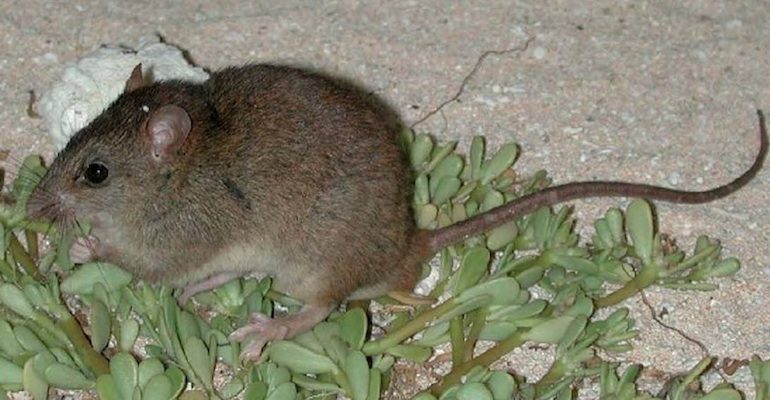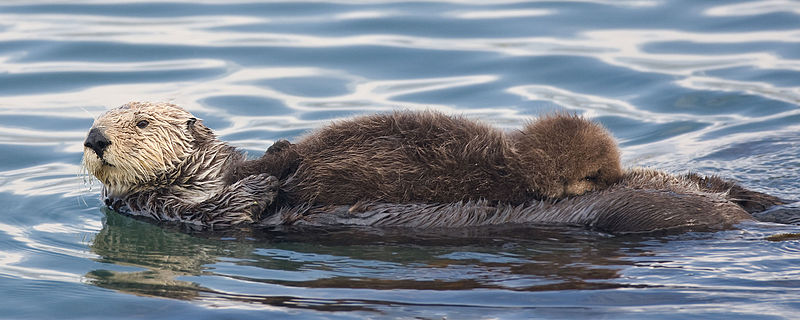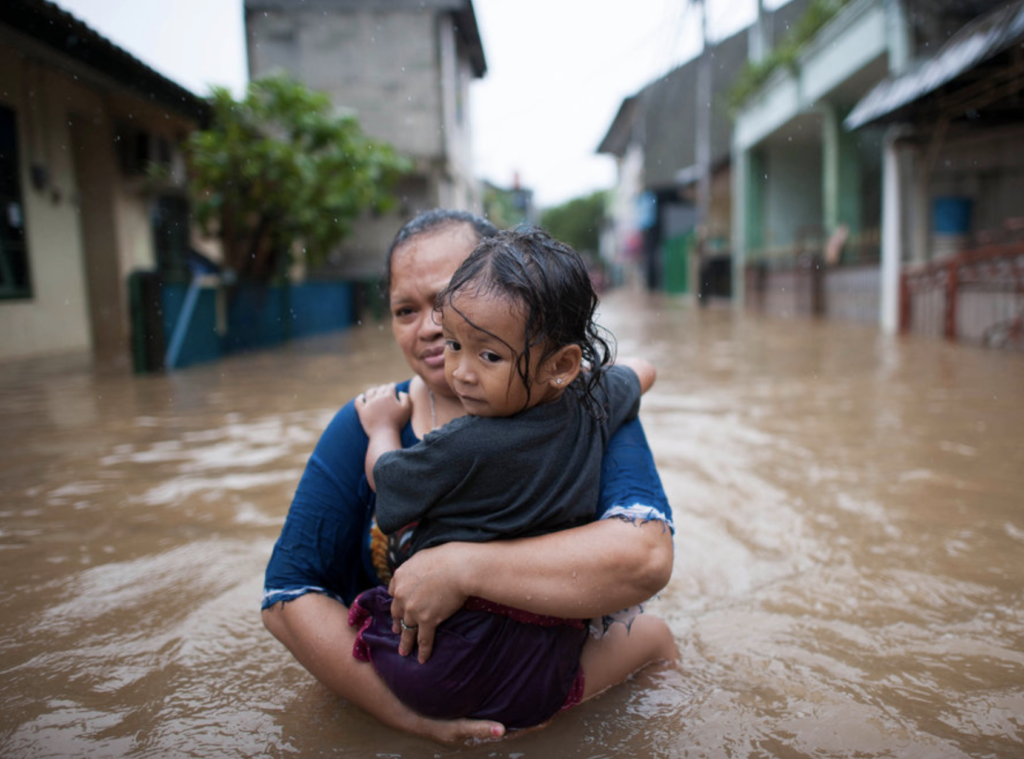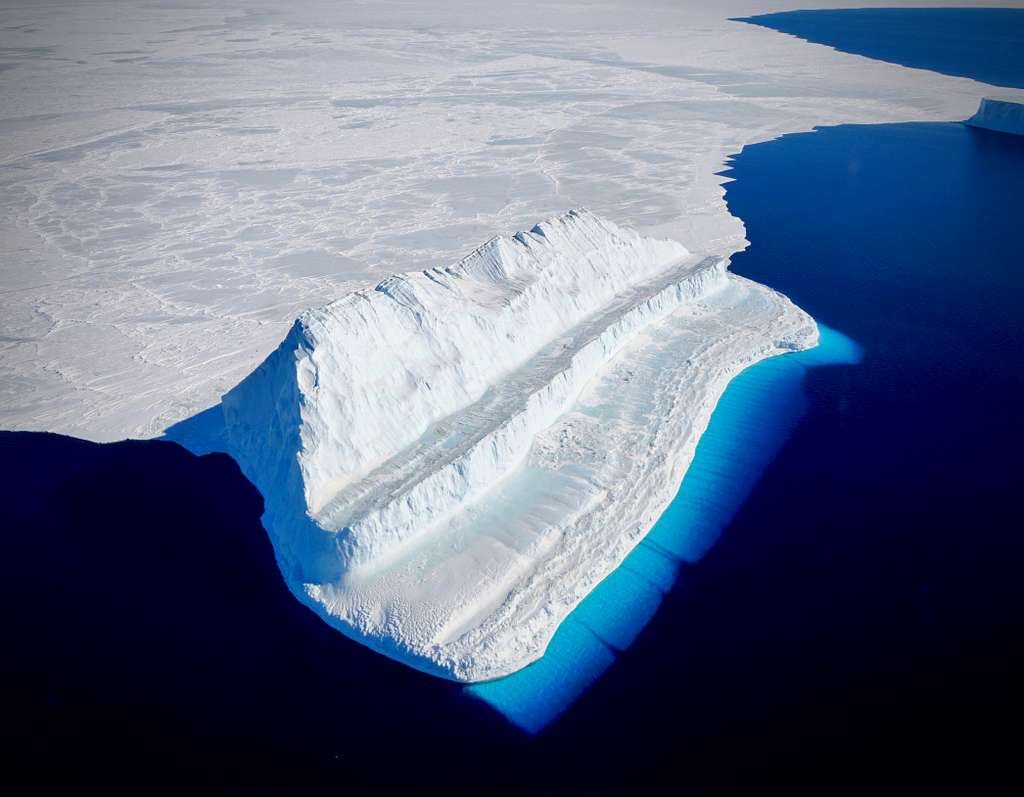Menu
Your question is very important to answer. I want to answer it because I have been interested in and worked on managing the interaction of people with the Earth for as long as I can remember. At your age, I was asking what the world was like before people and what difference we have made, good and bad. What a tough question. And 1.5 degrees does not seem like much, does it? Your question is so important that the Intergovernmental Panel on Climate Change (IPCC) devoted a whole special report of 630 pages in 2018 to this question. The answer I give is only a snippet of what you might wish to learn.
What does it mean to have a 1.5 degree Celsius temperature rise? This means that the average surface temperature (across all land, sea, and ice) of the Earth will have risen by 1.5 degrees since pre-industrial times. Pre-industrial times were times when the impacts people had on the Earth were very small and local to where they lived.
Because this is the average whole-Earth-surface temperature increase, the increase in average temperature will be different in different places – hot, dry areas will become hotter and drier. Cool, wet areas will become warmer and may either become drier or wetter depending on where they are. Frozen areas will become ice-free. The tropics will become places difficult to live in, for people, animals, and plants. The polar environments will reduce and may disappear in some places. This is happening now with the bleaching of coral reefs, the burning of rainforests, the drying of the continents and the reduction of ice-dependent systems, particularly in the Arctic and in the highest mountain ranges. And the sea level is rising. Thus, an average increase of the Earth’s temperature even before we reach 1.5 degrees can have wide ranging effects because of this variation around the Earth.
According to the IPCC, the Earth will not be doomed when the average temperature of the Earth goes past 1.5 degrees but, increasingly, life will become very different to what we are used to and, for many people, animals and plants, it will become very much harder to live (thousands of species are expected to go extinct as a result and many people will die). Our dreams and stories about life on the Earth will more and more become memories of past days rather than opportunities for experiencing in the future. But why would that be?
There are two very important factors to consider. The first is how rapidly and how far the sea level will rise. In Tasmania, many low-lying areas with townships (e.g. Kingston Beach) will become more frequently flooded, to the point when insurance companies will no longer insure houses for damage. Who will pay for those people to move their homes? Where will they go? More significantly, many low lying countries will become uninhabitable because of sea-level rise and floods. The people from those countries will need to move. How many millions of people will that be? Where will they go? Will they be helped to relocate? How understanding will the world be to people forced out of their homes?
The second factor is what a warmer atmosphere and ocean will do? Communities and livelihoods built on or around ice (permafrost, glaciers, snow) will reduce and possibly disappear. The IPCC has well established that the frequency and intensity of extreme weather events will increase. Increased storms and floods will compound the impacts of sea level rise as well as disrupt ports, coastal airstrips, roads, electricity grids and so on. But it is not just about storms and floods, it is also about heat waves and droughts. Hotter and longer heat waves will result in more people dying from heat stress. Longer and more frequent droughts will mean farms, grasslands and forests will become much drier and more difficult to sustain. This will lead to starvation and lack of water in many communities. In Australia, our Great Artesian Basin that gives water to so many of our rural communities will begin to dry up. Some of the more sensitive areas will be lost, like the Great Barrier Reef.
Limiting warming to 1.5 degrees will give us a greater chance of restoring the world to what we know and love. The greater the Earth warms the longer the impacts of that warming will last – rather than the effects of warming remaining until the end of the century it is likely to remain long after that time. Many scientists fear that if the Earth warms beyond 2 degrees then it may reach tipping points from which we cannot return to what we know. How can we believe this will happen when we have not experienced these levels of warming? The IPCC has well established mathematical models able to assess the nature of the climate, weather and state of the physical Earth system. These models have been tested in many ways to ensure they can be validly used to assess what the world will be like. These models then are used to determine what might happen to farms, forests, cities and ocean systems. For Tasmania, this has been done in a Climate Futures Tasmania project, which was one of the first projects globally to undertake these kinds of assessments to help communities and governments better plan and adapt to the future.
Can you believe these results? Ask your parents or grandparents how reliable the weather forecasts were during their childhood. Compare that to the forecasts we have now when we can plan at least four days in advance for what the weather will be like. These forecasts are based on atmospheric models, the same kind of models used for climate assessments.
Great question! It’s an extremely difficult question to answer, but I will do my best! There are more than nine million species of animal on Earth, and many more that we are yet to discover! However, I think all species will be affected by climate change – for some, the effects will be beneficial… But I suspect that most of the species we cherish will be negatively affected. I know one study looked at 538 plant and animal species around the globe. The study found that between 57 – 70% of these species may face extinction because of anthropogenic climate change (unnatural levels of change attributed to human activity). In fact, the first mammal to go extinct due to climate change has already been recorded – and it was an Australian species: The Bramble Cay Melomy.

In Australia, we are also witnessing the drastic effects of chytrid (pronounced ‘kit-rid') fungus. This fungus can occupy areas above a certain temperature, and as the climate warms, it increases its range. Unfortunately, it is deadly to frogs and other amphibians – coating their skin and making it difficult for them to breathe. It can also affect their nervous system and change their behaviour. Chytrid fungus has caused the decline of more than 40 Australian frog species. Of these, seven are now extinct.
As a marine scientist, I am most familiar with the issues faced by animals living in the ocean. One consequence of increased carbon emissions is the acidification of our oceans. When carbon dioxide combines with seawater, chemical reactions occur that produce carbonic acid. This is bad news for creatures that have shells (sea-snails, urchins, oysters, etc.), as the materials they use to form their shell have been degraded by acid. This means they have less protection from environmental conditions and usually means they cannot survive. If small animals like urchins do not survive, then animals that feed on urchins (like sea-otters) have no food and begin to starve.

Another marine-related consequence of climate change is to do with the rise in global average temperature. Some species, such as sea-turtles and crocodiles, require specific nest temperatures for the breeding season. This is because the temperature of the nest determines how many males and how many females will hatch from their eggs! For example, Green Sea-Turtles generally hatch as males if the nest temperature remains below 29 degrees Celsius, and hatch as females if the nest temperature is above 31 degrees Celsius. Temperatures between 29 and 31 tend to produce a mix of male and female hatchlings. As the temperature rises, we are seeing fewer males hatch, which means there will be fewer breeding opportunities and fewer babies hatching in the future. However, it is also worth noting if a nest gets too hot (above 36 degrees Celsius), then the turtles won’t hatch, and the nest fails. This would be dire for sea-turtle species.
Before finishing this answer, I want to emphasise that there are solutions to the climate crisis, and people around the world are working towards them. We can, and we will, avoid the worst of climate change. Whilst inevitable, the outcomes do not need to be the same as our current projections. Renewable energy solutions are becoming cheaper every day, and though Australia might seem a laggard on climate action, the international sector is collaborating and moving quickly towards a reduction in global emissions. Chile is rapidly phasing out coal power, and along with South Africa, Chile invests the most in renewable energy relative to their GDP. China is the world’s largest producer of wind energy and is working hard to meet its energy demands. The United States of America is seeking to reduce its own emissions by 50% by 2030. The world is listening to the science, and though it can feel slow at times, the wheels of progress are turning.
It is increasingly recognised that the current level of global funding in climate mitigation (reducing global emissions) and adaptation (disaster mitigation through minimisation of exposure and/or vulnerability to climate hazards) is nowhere near that needed to achieve the transition to a sustainable, net zero emissions and resilient world. Funding needs to increase drastically everywhere to meet this need.
At the moment, climate funding everywhere is focussed on supporting mitigation activities to reduce emissions, via renewable energy investment and shifting high emitting industries such as transport to low emission alternatives. Adaptation activities account for less than 10% of total available funding.
Measuring how well countries are adapting to climate change is very difficult, but we can measure how much countries have reduced their emissions. Other countries have been able to reduce their emissions more than Australia. CO2 emissions in the UK were almost 50% lower in 2020 than in 1990. Germany, Russia, and France have also managed to substantially reduce their emissions. The US were about 11% lower. In contrast, Australia’s emissions increased by approximately 40% over this period. China and India have seen an over 300% increase in emissions over this period associated with their economic growth.
Whilst China’s emissions have grown substantially, they are spending the most money of anywhere to reduce this. Almost a third of climate funding is spent in China, which has led to China’s production being much more efficient than in the past.
Climate funding in Australia is much lower. Less than 2% of global climate funding occurs in Australia, NZ and PNG combined.
This year, Australia updated its climate change commitments, pledging to reduce greenhouse gas emissions by 43% below 2005 levels by 2030. This compares to commitments by 2030 of other countries (US: 50-52% below 2005 levels; China 60-65% below 2005 levels; UK 68% below 1990 levels; EU: 55% below 1990 levels).
Australia has also this year announced major programs that will support adaptation activities, and we hope will improve Australia’s ability to withstand future climate disasters.
Further reading:
Naran, B. et al. Global Landscape of Climate Finance 2021 (Climate Policy Initiative, 2021).
Crippa, M., Solazzo, E., Huang, G. et al. High resolution temporal profiles in the Emissions Database for Global Atmospheric Research. Sci Data 7, 121 (2020). https://doi.org/10.1038/s41597-020-0462-2
There have been quite a few questions asking which countries and which places in the world are most affected by climate change, and about which countries are getting hotter, quicker.
As you know, the effects of climate change are different everywhere. Overall, we are seeing the planet heating, but this has different impacts in different places.
Did you know that climate change is also affecting where rain falls? How windy it is? When and where cyclones occur? There is nowhere on Earth that climate change isn’t having an impact, but the ways that climate change affects different countries depends on lots of different factors, including their geographical location, their exposure to different types of change, the sensitivity of the environment to change, and the capacity of their human population to adapt.
Understanding which is the most affected country depends on the risk criteria you are looking at.
If you wanted to know where the highest number of people are affected by climate change right now, you might think of countries affected by more intense extreme weather events, like Pakistan, Haiti, and the Philippines.
Also greatly impacted are countries with large cities in south-east Asia like Indonesia, and Bangladesh, which are losing coastal land with sea level rise, or countries in Africa affected by drought, like Kenya. If you wanted to know which countries are being faced with becoming unliveable or being lost altogether, you might think of countries in the Middle East reaching 50°C more often, or low-lying islands like Tuvalu, the Torres Strait Islands, and the Maldives.

In Bangladesh, salt water flooding over land has made farming impossible in many areas and finding fresh drinking water challenging.
In other parts of the world, the effects of climate change will be most felt by millions of people in terms of access to water. Many countries rely on water from glacier and snow melt both for drinking water and for agriculture. Countries like the Andean nations especially Peru, Chile, Bolivia, and countries in Southeast Asia that rely on glacier meltwater from the Himalayas could be strongly affected, as glacier ice is now melting faster than ever and less snow is tending to fall in some places – meaning there will be less water available in the long term.
Of course, parts of the planet that are already hot will become much more difficult to live in as it becomes hotter. Tropical areas around the Equator are most at risk here. Tropical areas could be pushed towards the limits of what humans can survive if temperatures rise more than 1.5°C above preindustrial levels. Humans can tolerate dry heat better than they can humid heat. Humans are unable to tolerate what is called a “wet bulb temperature” (that’s a measure of heat and humidity together) of over 35°C for very long. In these conditions, the human body is not able to cool itself down by sweating and such conditions can be fatal. Such conditions may have dire consequences for many animals as well. With temperatures increasing everywhere, this could have very serious consequences as about 40% of the world’s population currently lives in tropical areas. This effect of climate change alone could cause a huge refugee crisis with potentially millions of people displaced by climate change by 2050.
Just in terms of temperature rise, perhaps surprisingly, some of the coldest areas have warmed the most due to climate change. Though the global average temperature rise is currently at 1.1°C above preindustrial levels (and Australia’s average temperate is currently 1.44°C higher than when records began) the Arctic is heating up much more dramatically. Between 1971 and 2019, the Arctic’s average annual temperature rose by 3.1°C, meaning it’s heating almost three times faster than the rest of the planet – with drastic consequences on Arctic ecosystems and Indigenous peoples who call the Arctic home. The following video can help us to visualise which parts of the world have heated up most over the past 140 years, and therefore helps us understand which areas are currently most affected by climate change
While some countries might be worse off than others, and some countries might have more capacity to do something to limit the impacts, climate change is affecting ALL OF US and we all have a responsibility to make a positive difference.
This is such an interesting question that I asked a few of my friends and nearly everyone said, well, obviously dogs! This is because many of us have close relationships with our pets and we can imagine what they might be thinking, based on how they behave.
But can we really know how other species experience the world? Scientists have conducted experiments with animals and found, for example, that an octopus experiences their world through each of their eight arms separately, as if each arm had its own, mini brain! In another experiment, scientists found that some zebra finches seemed to have dreams about singing!
While science can observe some of the different ways that species experience the world, we can’t ever really know for sure how other species might be feeling. But just because we don’t know for certain, doesn’t mean it’s not important. In indigenous cultures, knowledge about how the world works and how to live well, is based on experiences of living with other species and caring for their needs alongside our own. This knowledge has helped humans to live for thousands of years in ways that means the environment will be there for future generations.
Humans have a place within the environment, so just like we miss other species when they’re gone, we can assume that other species would miss us. Understanding how other species experience the world may help us to help us to adapt to changes like those brought about by climate change. It can also help us to see the world in a different way and inspire us to act in ways that look after others.
This is a fantastic question, because it shows that you're thinking about fairness and justice when it comes to climate change!
Climate change affects each country, city and family differently, and some places and communities unfortunately will be hit harder than others. A way to start thinking about this is by thinking about how different people were affected by Covid-19. Although we were all facing the same problem, some countries with good healthcare services and money were more prepared to deal with it, but some other countries that struggled with poverty and poor living conditions suffered with more people getting sick.
With that in mind, when we look at all the countries in the world, some are at higher risk because their land is close to the sea level, including Bangladesh and Kiribati, and they may lose land and homes to sea level rise. Other countries, like Haiti and the Philippines, are more at risk because they already experience a lot of natural disasters like hurricanes and floods, which will become more common as climate change impacts are more unpredictable and severe. Finally, countries that suffer from poverty and war, including Yemen and Afghanistan, are at risk as their governments cannot help their people adapt to climate change, or access basic needs such as food and water.
At home in Australia, climate change can have worse effects on communities that suffer from health issues, such as older people, as higher temperatures can cause health issues. Some rural places already commonly experience natural disasters like bushfires and floods, and will face them more often into the future. Aboriginal people are also at a higher risk from climate change, as they experience more common climate-related health issues and have less access to financial and social support.
Although a lot of this can sound stressful, I hope that you do not lose hope, but instead know that it is so important that we not only look after ourselves, but other people in our communities that may be struggling. Climate change will impact us all in the future, and the way we can fight it is by supporting each other, and doing all we can to protect people and the planet.


There are two big reasons why sea levels are rising.
The first big reason is that as water gets warmer its volume expands. You can try this at home. At room temperature, 1 litre of water weighs 1 kilogram. When this water is heated, its mass stays the same but its volume increases.
The second big reason is that ice sheets and glaciers around the world are melting, adding mass to the ocean. From around the start of the 21st century, melting ice has been the largest reason for sea level rise. Ice sheets in Antarctica presents our greatest challenge - did you know that if all the ice in Antarctica melted it would add around 58 metres in sea level height?!

But the ocean is always moving, how do we measure sea level rise?
The ocean surface is constantly moving, with waves, stormy weather, and tides. Scientists measure changes in sea level using lots of frequent measurements by hundreds of tide gauges around the world, some which have operated for more than 100 years. For over 30 years, satellites have also measured sea level from space, covering the wide expanses of ocean far from any tide gauge. These measurements are averaged to give local and global estimates of sea level trends, taking into account changing land height. Measurements tell us that on average, sea level is rising and at an increasing rate. Some places are rising faster than others, in some places sea level is falling, but most locations are currently seeing around 4mm/year in sea level rise.
What can be done?
The most important thing to do about sea level rise is to slow it down by stopping burning fossil fuels. However, even if global warming stopped tomorrow, sea levels would continue to rise, likely for centuries, because of the heat that is already in the oceans. For this reason, we need to prepare everyone connected to the coast for change and improve our knowledge of how sea level rise will affect different places.
Dr Chloe Lucas explains how climate change leads to more frequent and intense bushfires.
Carbon credits, also known as carbon offsets, are used to balance out the emissions released by someone. For example, if an organisation can’t avoid the release of 1 tonne of greenhouse gases, they can buy 1 carbon credit (equal to 1 tonne).
Carbon credits are generated from activities that prevent greenhouse gas emissions from being released into the atmosphere; reduce the amount of greenhouse gas emissions being released into the atmosphere; or remove greenhouse gas emissions that are already in the atmosphere (also known as carbon sequestration). Some examples of offset projects are the installation of renewable energy infrastructure, conversion of waste into energy, reforestation or forest conservation. Many of these projects have additional environmental and social benefits (such as increased biodiversity or creation of local jobs).
These activities should follow offsets integrity principles and be certified to ensure the activity is genuine. For example, offset projects should be transparent, meaning that information needs to be clear and made available to relevant stakeholders. In addition, it is essential that emissions reductions achieved are additional to reductions that would have happened in the absence of the project, and measurable so they can be quantified and there is support from clear and convincing evidence
It is important to acknowledge that offsetting should be the last resource, after reducing emissions, when fighting climate change. This means that organisations and governments should not rely only on these projects but work towards achieving real and significant reduction of their own emissions. Nevertheless, offsets are currently an essential part of climate action.
Switching to renewable energy – especially wind and solar – is essential if we are to completely decarbonise the way we produce energy. Australia is lucky as we have particularly abundant renewable resources. We have really picked up the pace here in Australia on converting to renewable energy: 35.9% of Australia’s energy was generated by renewables in 2022, up from just 16.9% in 2017.
Yes, governments can and should lead the way, and they can do this by building new buildings that produce at least some of their own energy as well as ensuring existing buildings are very energy efficient, so they use less power. Multi-storey buildings, like government office buildings, often don’t have much roof space to accommodate rooftop solar panels. This is one reason why many government buildings don’t make their own power. But new types of solar energy technology now mean that multi-storey buildings can be clad all over with a “solar skin” like this proposed (non-government) building in Melbourne.

Some government buildings do have large roofs that are really suitable for generating all the energy they use, and more. For example, Australia’s airports – mostly federal government-owned buildings – have huge amounts of roof space that can accommodate large scale photovoltaic (or solar) systems. These can generate energy for the airport as well as thousands of homes and businesses. Other buildings with large roofs – for example, swimming pools which are often local government-owned – can produce more energy than they need for water heating and put power back into the grid.
One sector that is leading the way in getting government buildings to generate renewable power is – you guessed it – Australia’s schools. Schools all over the country are running solar fundraising campaigns and initiatives, like Solar My School in Sydney, some supported by local or state government. It’s bringing renewable power to thousands of classrooms with cost savings for the schools. It’s also a great learning opportunity for students to see how their school communities can lead the way in decarbonising and going renewable.
Historically, Australia hasn’t been very good at recycling with only around 11% of what we throw away being recycled into new products and large volumes of our “hard to recycle” materials being sent to our neighbouring countries, such as China, Indonesia, and Malaysia.
However, in 2018, China who received the vast majority of exported recyclable waste from countries such as, Australia, United States of America, and the United Kingdom, said “no more” and banned any country from exporting their waste to China. This ban was known as the National Sword Policy.
China’s new policy was a big wake up call for Australia and forced Australia to rethink and take responsibility for the ways we produce, use and discard products. In 2019, the Australia Federal Government announced a commitment and released a plan to manage and recycle all paper, plastic, rubber tires and glass materials within Australia. This means that every glass jar, plastic bottle, and paper cup you place in your recycling bin, as well as the old tires that get replaced on your parents’ car, will be recycled within Australia, and turned into new products. By 2030, Australia aims to recover and recycling 80% of all waste that we throw away. So although Australia hasn’t been the best at recycling in the past, we are now investing money and research into systems that do make us responsible for what products are available to purchase, how we use the products and importantly how we throw away our products. You might start noticing some new changes to the way we throw away our rubbish in years to come. For example, we might start having more bins for different waste streams, such as a bin just for glass or a bin just for cardboard.

Most of the methane that cows produce comes from burps, rather than farts. Cows fart (and burp) because they have to digest grass, which is quite hard to break down. Did you know cows have four different stomachs? And they chew their food twice? Imagine if you had four stomachs! You would probably fart and burp more too. Seaweed can be added to a cow’s diet to help reduce the amount a cow farts and burps. They are still looking into why this is and how to maximise these results, but it is very promising, as they have found that cows who eat seaweed burp and fart around 80% less.
Burps and farts produce methane which is a potent greenhouse gas. It makes climate change because it absorbs the light from the sun and so traps the heat in our atmosphere, creating the warming that contributes to climate change.
